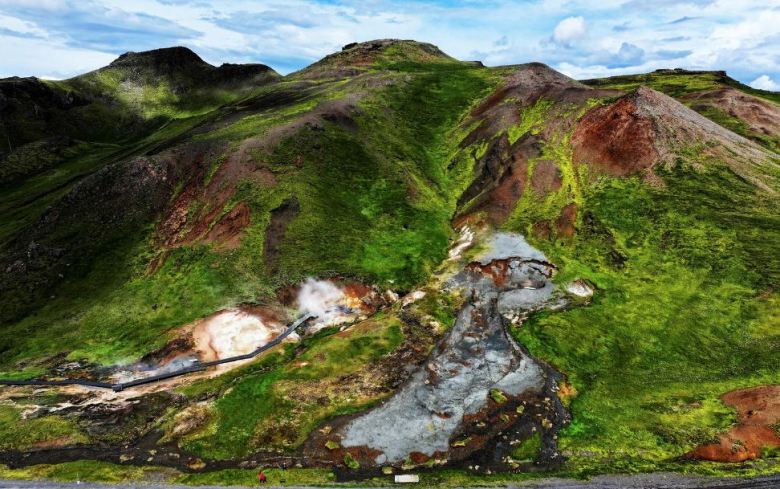
The Landslide Blog is written by Dave Petley, who is widely recognized as a world leader in the study and management of landslides.
Iceland Monitor has a very interesting article about a small landslide that occurred during heavy rainfall 0n 13 to 14 July 2024 on the southeastern side of Skíðaskálinn in Hveradalir, Iceland. This image shows the site and the landslide:-
The 13 – 14 July 2024 landslide at Skíðaskálinn in Hveradalir, Iceland. Image by Eggert Jóhannesson via mbl.is.
The landslide has exposed a hot spring – note the steam shown in the image above. The failure was triggered during a period of heavy, but not exceptional, rainfall. The landslide has been investigated by Þráinn Friðriksson, a geologist working for Reykjavík Energy, in collaboration with Iceland GeoSurvey (ÍSOR), the Icelandic Met Office and Efla Engineering.
Their work suggests that the geothermal activity has weakened the soil above the spring – this is very probable. As an aside, in Nepal, we often see landslides at locations known locally as Tatopani, which translates as “hot water” (see this example as a case in point). Landslides are more frequent in these areas in part because of the weathering of the soil and rock caused by the geothermal activity.
In the Iceland example, the rainfall then saturated the soil, but the presence of steam increased the pore water pressures, triggering the failure.
Unroofing the spring would have led to a rapid release of the pressure, which resulted in the weathered soils and regolith being ejected onto the surrounding terrain.
Text © 2023. The authors. CC BY-NC-ND 3.0Except where otherwise noted, images are subject to copyright. Any reuse without express permission from the copyright owner is prohibited.
Related
